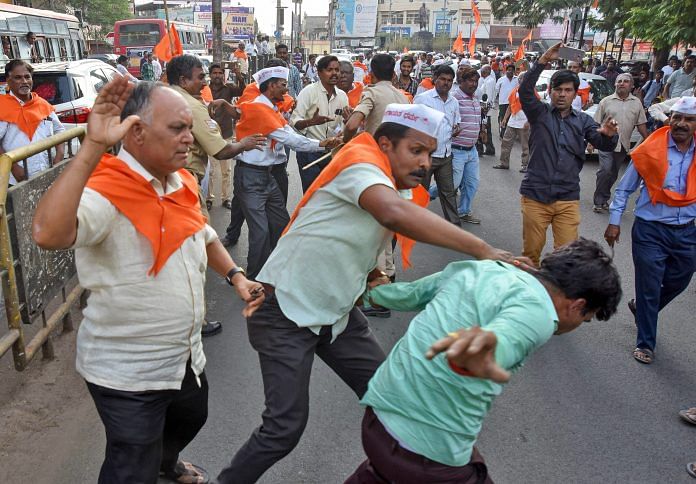In poll-bound Karnataka, what is the big deal about Siddaramaiah giving religious minority status to Lingayats?
New Delhi: The Congress government in Karnataka announced Monday that it had decided to recommend to the Centre religious minority status for the Lingayats. A host of controversies has ensued since: while the opposition has called it a divisive move, the Veerashaivas have complained about being identified as a subset of Lingayats.
Here, ThePrint breaks down the issue for you.
The Lingayats, known to be BJP supporters for over two decades, constitute 17 per cent of Karnataka’s population and can reportedly influence the outcome in 100 of the state’s 224 assembly seats. This is why the move, coming as it does on the threshold of state elections, is laden with political significance.
The state government’s move follows the report of an eight-member expert panel headed by retired high court judge H.N. Nagamohan Das that recommended Lingayats’ recognition as a religious minority under the Karnataka Minorities Act.
Who are the Lingayats?
The Lingayat sect is believed to have stemmed from the principles of the 12th century social reformer and Kannada poet Basava. However, many scholars believe he furthered an established sect. Inspired by the ‘Bhakti’ movement, Basava rejected temple worship and Brahmin rituals and envisaged a religion free of gender and religious discrimination.
Several people from backward castes opted to be Lingayats over the centuries to escape the rigid Hindu caste system.
Are Lingayats and Veerashaivas the same?
No. While both Veerashaivas and Lingayats pray to the Hindu god Shiva, the two sects are not synonymous. Like the Brahmins believe they were born from the ear of Brahma, the Veerashaivas believe themselves to be born of Shiva’s lingam or phallus.

The major difference between the Lingayats and the Veerashaivas is that while the former reject the Vedas and the caste system, the latter don’t. The Lingayats worship Shiva as a formless entity (ishta linga), while Veerashaivas worship the Vedic idol of Shiva with a snake around his neck.
These are the reasons why, since the framing of the Constitution, the Lingayats have been seeking recognition as a religion independent of Hinduism.
Why the confusion?
The 12-century vachanas or sayings of Basava were lost or dispersed among different southern states, following which many texts clubbed Veerashaivas and Lingayats under one umbrella. It is only recent research that has helped differentiate Veerashaivas, Lingayats, and Hindus.
The state government’s announcement implied that the administration sees the Veerashaivas as a subset of the Lingayats. Several Veerashaiva leaders had met Karnataka CM Siddaramaiah last week to voice their disagreement with the move.
Ministers from the Veerashaiva and Lingayat sects have sparred over the issue in Siddaramaiah’s cabinet, with the former protesting the grant of religious minority status only to Lingayats.
The political controversy
The BJP chief ministerial candidate for Karnataka, B.S. Yeddyurappa, is also a Lingayat. While the party has slammed the state government’s move, Yeddyurappa has been silent.
In 2013, the All India Veerashaiva Mahasabha had submitted a memorandum to the then PM, Manmohan Singh, to recognise the Veerashaiva Lingayats as a separate religion in the census. Yeddyurappa was one of the signatories then, thus his current dilemma.
What will a religious minority tag mean for the Lingayats?
If the Centre accepts Karnataka’s recommendation, Lingayats will, among other things, be allowed to set up and administer their own educational institutes.




Hello print,
It seems that the author claims shiva is worshipped as idol form by veershaiva..but shiva is never worshiped in idol form in any hindu ritual let alone veetshaiva..it only In Linga form…
Hello print,
It seems that the author claims shiva is worshipped as idol form by veershaiva..but shiva is never worshiped in idol form in any hindu ritual let alone veetshaive..it only In Linga form…the change that basavanna brought was that instead of going to temple,peoples Can have there own linga in there hand and mind you they perform pooja using water,ash,flower,camphor.it’s bring linga pooja to Individual home than going to temple as an option…the basis of seperation is incorrect…it’s like saying people who worship ram and krishna belong to separate religion… Please review…